| |
|
|
|||||||
| HISTORY | ||||||||
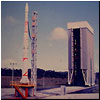 |
Origin of the Kourou launch site In 1964, France made the decision to build a new rocket launching site in Kourou, French Guiana. The initial construction was completed in 1968 with price tag of 25 million francs. Kourou provided France with an alternative to the Hammaguir rocket test base in the Sahara desert, evacuated by June 30, 1967, in the aftermath of the Algerian war for independence. |
|||||||
|
||||||||
| FACILITIES | ||||||||
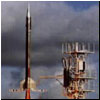 |
Launch site for sounding rockets By 1968, a total of three launch pads for suborbital launches of sounding research rockets were completed in Kourou. Two pads were designed for solid-propellant boosters and one for liquid-propellant rockets. On April 9, 1968, the first sounding rocket, Veronique, was launched from Kourou. Although in the following years, the focus of Guiana Space Center was shifted to orbital space launchers, suborbital missions sporadically continued from the pad at the turn of the 21st century. In 2023, the pad was used for the 3.5-meter Mésange suborbital rocket from Opus Aerospace and capable of reaching 100 kilometers. |
|||||||
|
|
Diamant launch site In 1969, a launch pad for the Diamant rocket was completed in Kourou. It became the first space launch complex at the site. On March 10, 1970, the Diamant-B rocket successfully delivered the DIAL satellite into orbit, the first spacecraft launched from Kourou. In April 2019, satellite photos showed signs of construction at the site, likely associated with the Callisto reusable rocket project developed by a French-German-Japanese partnership. CNES later confirmed that the facility would support multiple reusable vehicles, including Themis, Callisto and future microlaunchers. In 2023, the RFA company said it would use the site for its rocket (INSIDER CONTENT), and by 2024, Isar Aerospace said it had been selected by CNES as a user. |
|||||||
ELA-1: Launch pad for Europa to Ariane-1 launchers The ELA-1 launch complex was originally intended for the Europa-2 booster. However the very first attempt to fly the vehicle from Kourou in November 1971 ended in failure, after which the program was shut down. The ELA-1 launch complex was later refurbished for the Ariane program, which was officially under development from July 1973. At the beginning of the 21st century, the launch complex was refurbished again, this time for the light-weight Vega booster. |
||||||||
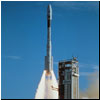 |
ELA-2: Launch pad for Ariane-3 and 4 rockets ELA-2 was designed and built by CNES on behalf of the European Space Agency (ESA). The site entered service on March 20, 1986, with the launch of Ariane-3 rocket (Flight V17). It was then upgraded for Ariane-4 launches which started with Flight V22 on June 15, 1988. This complex was then used for all Ariane-4 launches until the rocket's last mission, Flight V159, on June 15, 2003. |
|||||||
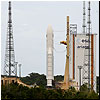 |
ELA-3: The Ariane-5 launch complex In 1988, the construction started at the ELA-3 complex, which covered a 3 by 5-kilometer area of land not far from ELA-2 and 25 kilometers north-west of Kourou. The facility was designed to handle a launch rate of eight to ten Ariane-5 launches per year at one-month intervals. |
|||||||
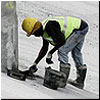 |
ELS: History of the launch complex for Soyuz rocket in Kourou At the early days of the center, the French government made an official decision to make the site available to any country willing to deploy its space launcher systems there. At the time, few could predict that Russian rockets would become the first "foreign guests" in Kourou. After several years of consideration, Europe committed itself to fund the construction of a launch pad for the Soyuz-2 family of rockets in Kourou. On November 7, 2003, the Russian and French governments formally agreed to bring Soyuz to Kourou. The facility operated from 2011 until early 2022. |
|||||||
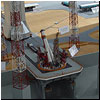 |
ELS: Anatomy of the Soyuz launch complex in Kourou The Soyuz launch complex in Kourou was built for as many as 50 launches of Soyuz rockets over a 15-year period, with three-four missions annually, before the first refurbishment of the facility would be required. The launch facility was located between 12 and 13 kilometers northwest of the ELA-3 facility in Kourou. The closest residential town -- Sinnamary -- lies 18 kilometers northwest from the Soyuz pad and the main residential area of the Guiana space center -- Kourou -- is 27 kilometers away in opposite direction. |
|||||||
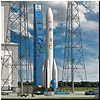 |
ELA-4: The Ariane-6 launch complex In 2015, ESA awarded French Space Agency, CNES, a 600-million-euro contract to build the ELA-4 launch facility for the Ariane-6 rocket in Kourou. It included 700-ton launch platform and a 90-meter mobile service tower. Active construction started at the site in 2017 and approached completion in 2019. The launch pad was officially inaugurated on Sept. 28, 2021. Ariane-6 was expected to begin operations from the center in the early 2020s, but, in reality, the first launch would not take place until July 9, 2024. |
|||||||
|
In addition to the main launch complex, the Guiana Space Center is equipped with numerous state-of-the-art support facilities, including a vast technical center, S5 area for pre-launch processing of multiple satellites, communications, weather forecast and tracking sites, propellant plants and a test stand for live engine firings. |
||||||||